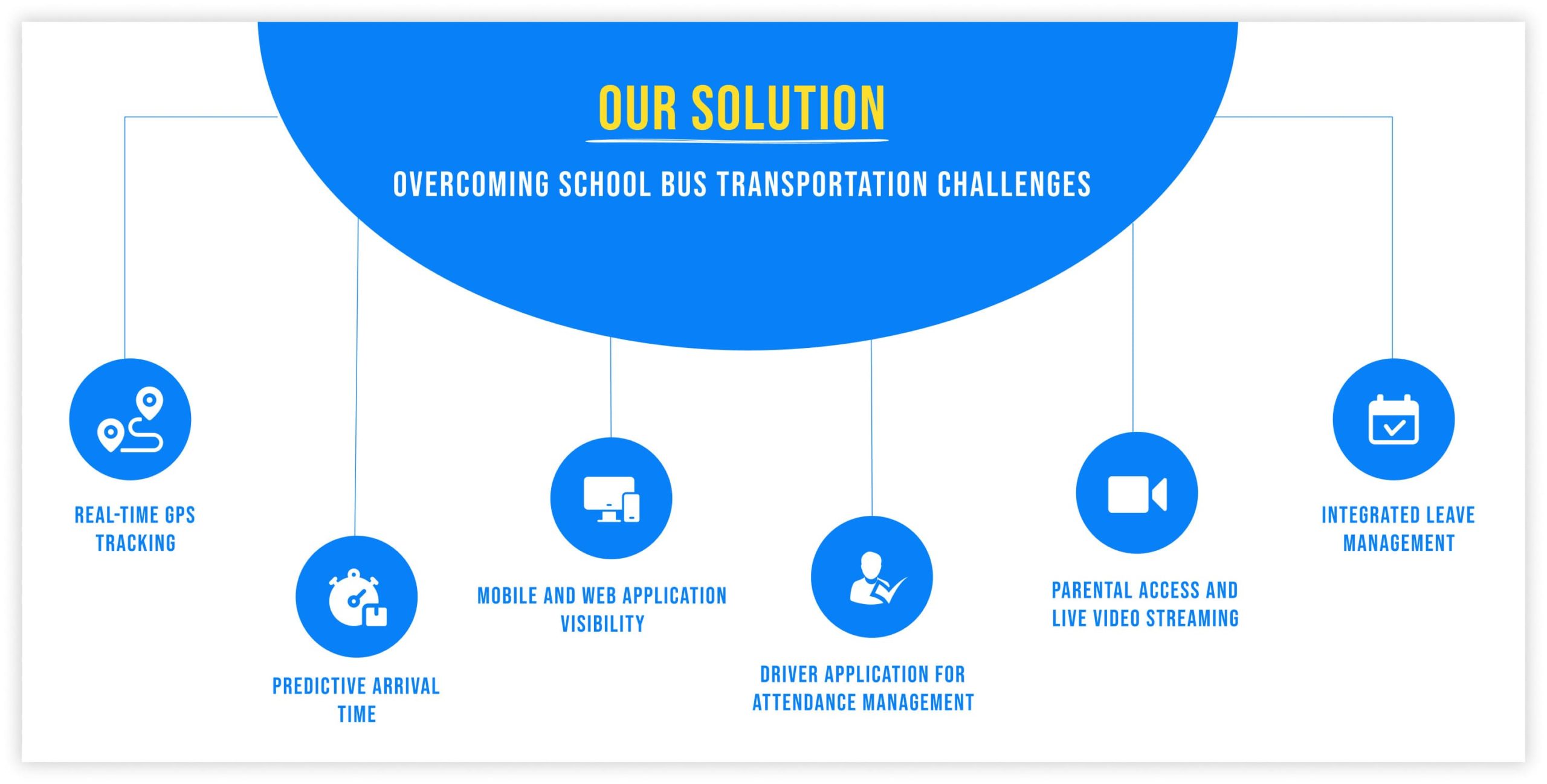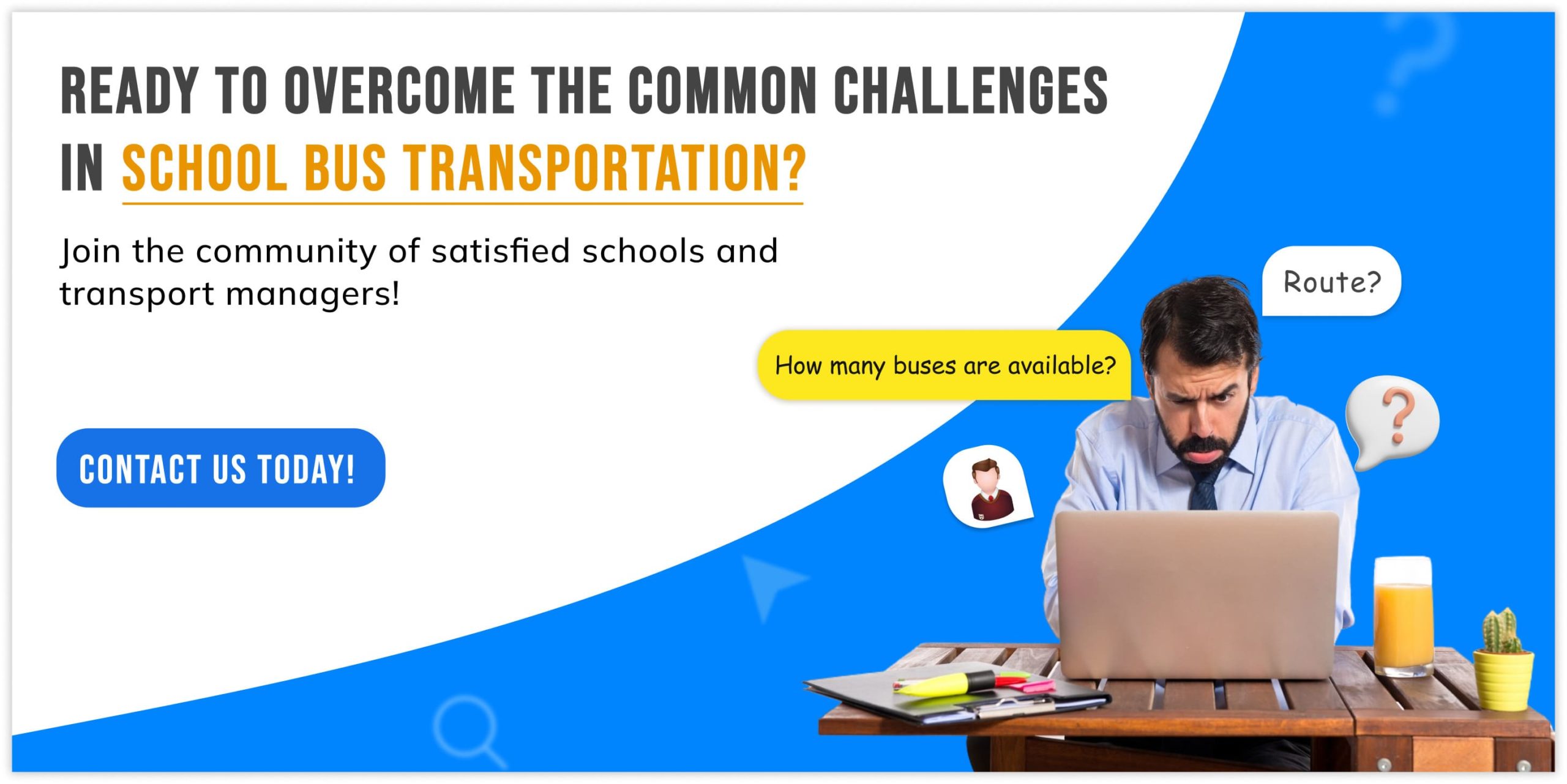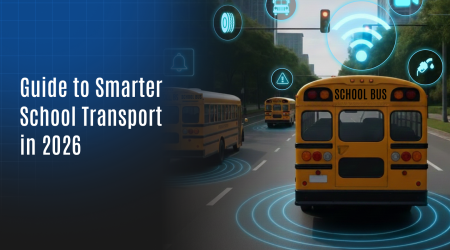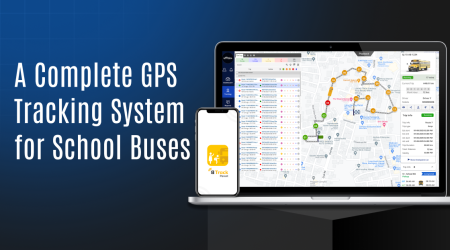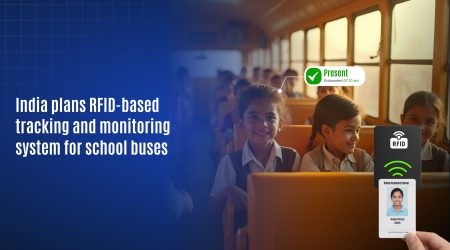Overcoming Common Challenges in School Bus Transportation
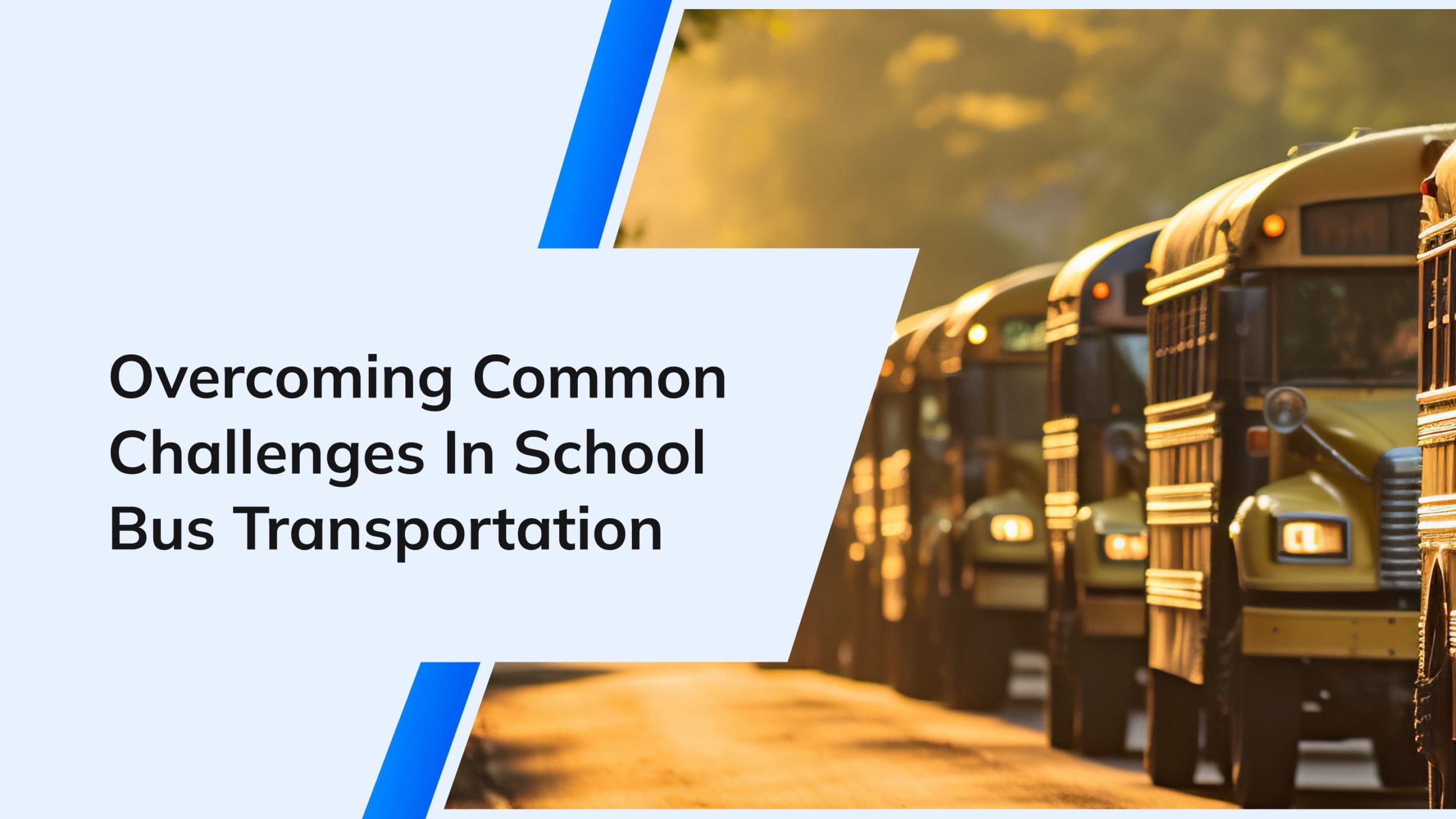

The Problem: School Bus Transportation Challenges
Despite its importance, school bus transportation often faces several common challenges that can disrupt the smooth functioning of school operations. These challenges include:
Manual Communication with Bus Drivers:
Traditionally, school administrators have relied on manual methods to communicate with bus drivers. This often involves making phone calls to check the location and status of the buses, leading to delays, miscommunication, and inefficiencies. For instance, if a bus is running late, the administrative staff must spend considerable time and effort contacting the driver and relaying information to concerned parents, which can be stressful and time-consuming.
Delays in Bus Arrivals:
Unexpected delays in bus arrivals can create significant problems for students, parents, and school staff. Without real-time tracking, predicting the bus’s arrival time becomes difficult, causing frustration and anxiety. Students might miss important classes, parents might worry about their children’s safety, and school staff might struggle to manage schedules effectively.
Lack of Live Tracking:
The absence of a live tracking system leaves both parents and school administrators in the dark about the bus’s current location and route. This lack of visibility can lead to safety concerns and unnecessary stress. Parents want to be assured that their children are safe and on the correct route, and administrators need to ensure that buses are adhering to planned routes and schedules.
Limited Visibility for Transport Managers:
Transport managers often struggle with inadequate visibility of bus trips. Traditional methods do not provide real-time data, making it challenging to monitor and manage the fleet effectively. This can cause poor route management, higher fuel costs, and trouble handling unexpected events like traffic or breakdowns.
Attendance Management:
Manual attendance tracking by bus drivers takes a lot of time and is often inaccurate. Accurate attendance is crucial for ensuring student safety and for maintaining reliable records for both the school and parents.
Insufficient Information for Parents:
Parents frequently lack timely information about bus trips, leading to concerns about their child’s safety and punctuality. Additionally, the absence of live video streaming features can leave parents feeling disconnected from the bus journey. Parents want updates on when their child boards and disembarks the bus, and reassurance that the bus journey is safe.
Complicated Leave Management:
Handling student leave applications manually can be cumbersome for both parents and school administration. An integrated leave management system is essential for efficient handling of such requests. Without a streamlined process, leave requests can be lost or delayed, causing inconvenience for families and school staff alike.
⟶ Top 8 School Bus Routing Software To Manage your Transport Business
Our Solution: Overcoming School Bus Transportation Challenges
To address these school bus transportation challenges, innovative solutions have been developed to streamline school bus transportation and enhance the overall experience for all stakeholders.
Real-time GPS Tracking:
Introducing a real-time GPS tracking system enables school administrators, transport managers, and parents to monitor the bus’s location and route live. This removes the need for manual communication with drivers and offers precise, current information. Real-time tracking ensures that everyone is aware of the bus’s location, reducing anxiety and improving coordination.
Predictive Arrival Times:
With predictive arrival times based on real-time data, parents and school administrators can anticipate delays and plan accordingly. This reduces anxiety and improves overall satisfaction. Knowing the exact time of arrival allows parents and school staff to manage their schedules better, avoiding unnecessary waiting times.
Mobile and Web Application Visibility:
Providing transport managers with access to a comprehensive dashboard on both mobile and web applications enables them to monitor all bus trips, manage routes, and ensure operational efficiency. This real-time visibility enables quick decision-making and more effective management of the transportation fleet.
Driver Application for Attendance Management:
A dedicated driver’s application simplifies attendance management by allowing drivers to record attendance digitally. This data is instantly accessible to school administrators, reducing errors and saving time. Digital attendance records ensure accuracy and make it easier to keep track of students.
Parental Access and Live Video Streaming:
Parents can access the bus’s live location and view real-time video streaming of the bus trip through a dedicated application. This feature enhances transparency and provides peace of mind regarding their child’s safety. Seeing live footage of the bus trip reassures parents that their children are safe and allows them to monitor the journey in real-time.
Integrated Leave Management:
An integrated leave management system allows parents to submit leave applications directly through an app. This information is instantly updated in the school’s system, streamlining the leave management process and ensuring timely updates. A digital leave management system makes it easier for parents to request and track leave, and for school staff to manage and approve requests.
Implementation
Implementing these advanced solutions involves a step-by-step guide to ensure smooth integration and optimal use:
Assessment and Planning:
Evaluate the current transportation system and identify areas for improvement. Plan the implementation process, including timelines and resources required.
System Setup:
Install GPS tracking devices on buses, set up mobile and web applications, and configure the driver’s attendance management system.
Training:
Provide comprehensive training for school administrators, transport managers, bus drivers, and parents on using the new system.
Testing:
Conduct thorough testing to ensure all components of the system work seamlessly together.
Launch:
Roll out the new system across the school transportation network, providing support and troubleshooting as needed.
Monitoring and Feedback:
Continuously monitor the system’s performance and gather feedback from users to make necessary adjustments and improvements.
Impact and Results
The implementation of these advanced solutions has led to significant positive impacts on school transportation management.
Enhanced Operational Efficiency:
Schools have reported enhanced operational efficiency, reduced miscommunication, and increased satisfaction among parents and students. Real-time data and improved communication channels streamline operations and reduce the workload on administrative staff.
Real-time Decision Making:
Transport managers benefit from real-time visibility, enabling them to make informed decisions and manage the fleet more effectively. Immediate access to information allows for quicker responses to any issues that arise, improving overall fleet management.
Increased Parent Satisfaction:
Parents appreciate the transparency and security provided by live tracking and video streaming, fostering trust and peace of mind. When parents can see real-time information about their child’s bus trip, their concerns about safety and punctuality are alleviated.
Accurate Attendance Tracking:
The digital attendance management system has minimized errors and saved valuable time for both drivers and school administrators. Accurate attendance records ensure that all students are accounted for, enhancing safety and simplifying record-keeping.
Streamlined Leave Management:
The integrated leave management system has simplified the process for parents and school administrators, ensuring timely updates and efficient handling of leave requests. A streamlined process for managing leave requests reduces confusion and ensures that all parties are kept informed.
Tips for Success
To maximize the benefits of the new school bus monitoring system and avoid common mistakes:
- Regular Training: Conduct regular training sessions to ensure all users are proficient with the system.
- Feedback Loop: Establish a feedback loop with users to identify and address any issues promptly.
- Maintenance: Regularly maintain and update the system to ensure optimal performance and security.
- Communication: Keep an open line of communication with parents, drivers, and school staff to ensure everyone is informed and engaged.
Conclusion
Overcoming school bus transportation challenges through innovative solutions can greatly enhance the workflow of school management. By leveraging real-time GPS tracking, predictive arrival times, comprehensive visibility for transport managers, and integrated attendance and leave management, school transportation can be transformed into a seamless and efficient process. This not only ensures the safety and satisfaction of students and parents but also improves the overall efficiency of school operations.
Addressing school bus transportation challenges with these technological advancements is a step towards a more connected and effective school transportation system. Take the next step to transform your school bus transportation—schedule a free consultation today and see how our solutions can make a difference.
